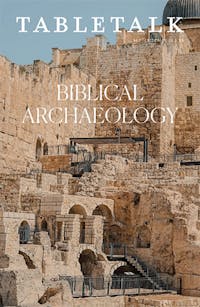
Request your free, three-month trial to Tabletalk magazine. You’ll receive the print issue monthly and gain immediate digital access to decades of archives. This trial is risk-free. No credit card required.
Try Tabletalk NowAlready receive Tabletalk magazine every month?
Verify your email address to gain unlimited access.
Underneath the City of David, the oldest part of Jerusalem, is a tunnel cut through the bedrock that allows water from the Gihon Spring (on the northeast corner of the city, 175 feet below the top of the ridge) to flow into a pool inside the city (near the southwest corner). It fits the description of the work credited to Hezekiah in 2 Kings 20:20 and 2 Chronicles 32:30, and organic material found in its original plaster lining has been radiocarbon-dated to a period that includes the time of Hezekiah. Thus, it is known as Hezekiah’s tunnel (also called the Siloam tunnel), and it was an engineering marvel in its day. The tunnel was probably part of Hezekiah’s preparations for an Assyrian siege (see 2 Chron. 32:1–4), but it also brought water closer to the western portion of Jerusalem that had expanded under Hezekiah.
The tunnel is about 1,750 feet long and is on average about two feet wide and six feet tall, although it reaches sixteen feet high near its end. The tunnel’s floor elevation is almost flat, sloping by only about one foot over its length. Its path is not straight, however, but follows a curving S-shape. The straight-line distance from beginning to end is around 1,070 feet or 40 percent shorter.

The tunnel was dug by two teams starting from each end, as seen in the direction of the pick marks on the walls. An inscription (the Siloam inscription) found inside the tunnel describes how the two teams could hear each other through the rock as the tunnels were joined. The tunnels are somewhat misaligned where they join, and there are several false starts on both sides near the meeting area where the workers changed the direction of their tunnels until they finally met.
It was originally thought that the two teams followed an existing cleft in the rock through which water flowed from the Gihon Spring. Further studies have argued, however, that this explanation does not fit the geology of the rock or the evidence from the tunnel itself (such as the false starts). Instead, it is postulated that shafts from the surface above the tunnel, one of which intersects with the tunnel, were used to help guide the teams by sound traveling through the rock. The winding path is probably due to changes in plans and techniques as the workers innovated to complete the longest tunnel in their day.
